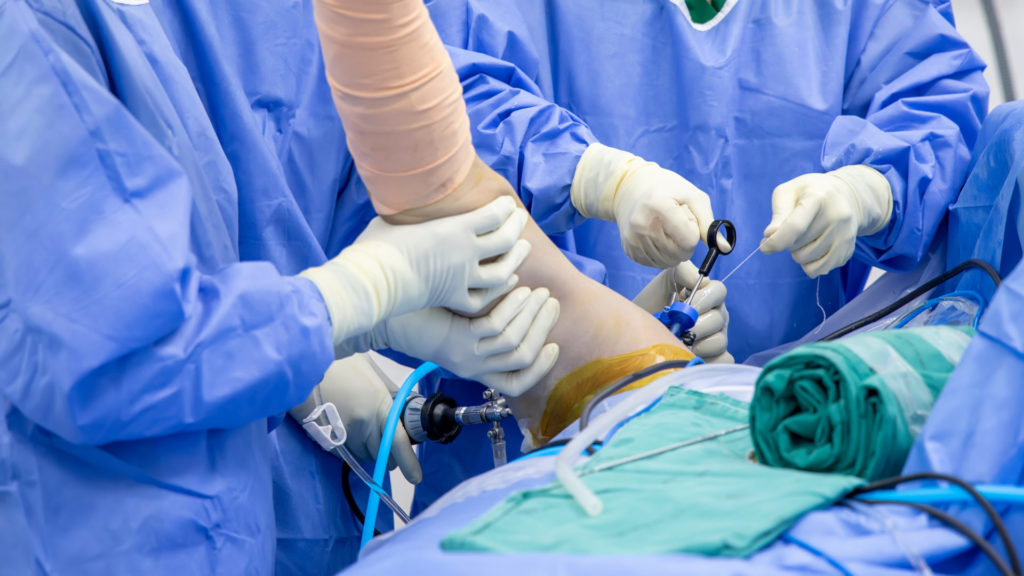What is a frozen shoulder?
Frozen shoulder means your shoulder is painful and stiff for months or years. It can be treated with shoulder exercises and painkillers. However, in some cases, further treatment or surgery may be recommended.

Ready to book now? Get in touch to discuss your needs and decide on the best course of treatment for you.
Ready to book now? Get in touch to discuss your needs and decide on the best course of treatment for you.
What are the symptoms of a frozen shoulder?
Frozen shoulder symptoms tend to take over two years to improve and follow the below three phases.
- The painful stage: pain is the primary symptom in this stage, you may also experience a slight reduction in certain movements.
- The stiff stage: during this stage your shoulder will lose the greatest degree of range. The pain remains in this stage but you are better equipped to manage it.
- The thawing phase: here your shoulder will slowly improve in terms of pain and movement. Treatment of a frozen shoulder concentrates on controlling pain, maximising range of movement and maintaining strength and function. Keeping active and maintaining a healthy lifestyle are also important as you recover.
Causes of a frozen shoulder
The exact cause of a frozen shoulder is unclear. It happens when the tissue around your shoulder joint becomes inflamed. The tissue then gets tighter and shrinks, which causes pain.
Frozen shoulder can happen because:
- you previously had an injury or surgery that prevents you from moving your shoulder regularly
- you have diabetes. However, it’s unclear why this is a risk factor. It’s recommended that you have regular diabetes check-ups.
How is a frozen shoulder diagnosed?
A frozen shoulder can be reliably diagnosed by your doctor or physiotherapist by taking a history of your condition and by conducting a physical examination.
The main feature on examination is increasing restriction of movement at the shoulder. This gradually progresses to involve all movements over a few months (the freezing phase).
X-rays and scans are not routinely required.
Frozen shoulder treatment
Treatment for a frozen shoulder can be described in three stages.
- Pain relief – avoid movements that cause you pain. Only move your shoulder gently. Use paracetamol or ibuprofen to ease the pain.
- Stronger pain and swelling relief – prescribed painkillers. A steroid injection into the shoulder can provide pain relief and sometimes an increase in shoulder movement. Other options include a special injection to try and gain a greater improvement in shoulder movement by injecting a larger volume of fluid to stretch and tear the shoulder capsule. This is known as hydro dilatation.
- Getting movement back – shoulder exercises once it’s less painful. This can be at home or with a physiotherapist.
The final option is surgery.
What is frozen shoulder surgery?
Frozen shoulder surgery is performed either as a manipulation under general anaesthetic to tear the shoulder capsule and free-up the shoulder, or as keyhole surgery to release the stiff tissues of the shoulder under direct vision. Whichever method is employed, it is important to keep the shoulder moving after the surgery to prevent it from re-stiffening.
If non-surgical treatments are ineffective, the below surgeries can be considered:
- Capsular release surgery – This is a keyhole surgery which releases the stiff areas of the shoulder joint capsule
- Manipulation under anaesthetic (MUA) surgery – This is the manual manipulation of the shoulder joint with the patient asleep.
The two surgical procedures above carry small risks and would be considered only when other treatment options have been exhausted.
What happens during frozen shoulder release (capsular release) surgery?
This type of surgery is performed using keyhole surgery techniques. This means your surgeon will insert a camera into your shoulder to examine your shoulder. Surgical instruments will then be inserted into your shoulder through small incisions. The number of incisions depends on the techniques your surgeon uses. Your surgeon will then cut the tight capsular tissues surrounding the shoulder joint, allowing your shoulder to move freely.
Preparing for your frozen shoulder release surgery
Your operation will be carried out by an orthopaedic surgeon. They’ll explain how to prepare for your procedure and what to expect.
The operation is usually a day-case procedure. This means you can go home on the same day.
You will likely have general anaesthetic. Your surgeon will explain how to prepare for this before your surgery.
What happens after shoulder release surgery
After your surgery, you’ll have time to recover and your arm will likely be placed in a sling. Your surgeon will explain how long you should use the sling for and how to look after your wound.
If keyhole surgery was used to perform your shoulder surgery, you should be able to return home the same day. You might experience some discomfort following your surgery, but this can typically be handled with over-the-counter pain killers.
Recovering from your surgery
Before you go home, you will likely meet with a physiotherapist who will support your recovery with exercises you can complete at home.
Depending on what was involved in your procedure, it can take several weeks to several months to recover from shoulder arthroscopy. Most people regain full movement of their shoulder afterwards, but this may take some time.
You’ll likely need help to wash and dress yourself at first. This should get easier after a few weeks.
Complications of frozen shoulder release surgery
As with any surgery, there are potential risks that are associated with having shoulder surgery. These include:
- infection, however this can be treated with antibiotics
- blood clots: You will be asked to move around as much as possible to promote healthy blood flow and prevent clots
- swelling and bruising around your wound, though this will resolve itself in time
- scarring at the site of the incisions. However, this should fade in time.

